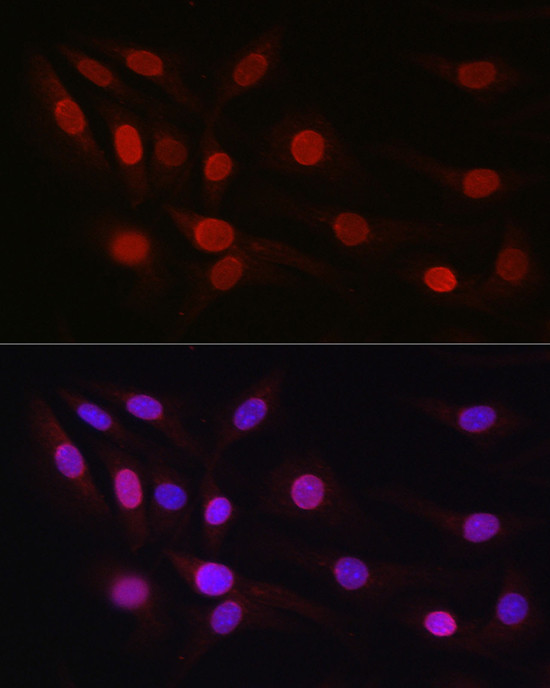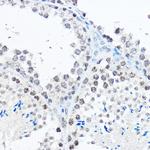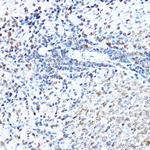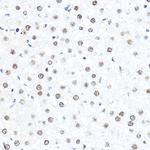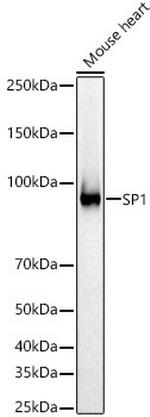Search Thermo Fisher Scientific
Product Details
PA5-120286
Species Reactivity
Host/Isotype
Class
Type
Immunogen
Conjugate
Form
Concentration
Purification
Storage buffer
Contains
Storage conditions
Shipping conditions
RRID
Product Specific Information
Positive test controls include: Mouse liver, Mouse heart, Rat liver. The target is usually found in the following locations: Cytoplasm, Nucleus.
Immunogen sequence: LSGQTFTTQA ISQETLQNLQ LQAVPNSGPI IIRTPTVGPN GQVSWQTLQL QNLQVQNPQA QTITLAPMQG VSLGQTSSSN TTLTPIASAA SIPAGTVTVN AAQLSSMPGL QTINLSALGT SGIQVHPIQG LPLAIANAPG DHGAQLGLHG AGGDGIHDDT AGGEEGENSP DAQPQAGRRT RREACTCPYC KDSEGRGSGD P
Target Information
SP1 is a transcription factor that can activate or repress transcription in response to physiological and pathological stimuli. Binds with high affinity to GC-rich motifs and regulates the expression of a large number of genes involved in a variety of processes such as cell growth, apoptosis, differentiation and immune responses. Highly regulated by post-translational modifications (phosphorylations, sumoylation, proteolytic cleavage, glycosylation and acetylation). Binds also the PDGFR-alpha G-box promoter. May have a role in modulating the cellular response to DNA damage. Implicated in chromatin remodeling. Plays a role in the recruitment of SMARCA4/BRG1 on the c-FOS promoter. Plays an essential role in the regulation of FE65 gene expression.
For Research Use Only. Not for use in diagnostic procedures. Not for resale without express authorization.
References (0)
Bioinformatics
Protein Aliases: HGNC:11205; Specificity protein 1; trans-acting transcription factor 1; Transcription factor Sp1
Gene Aliases: 1110003E12Rik; AA450830; AI845540; SP1; Sp1-1; TSFP1
UniProt ID: (Human) P08047, (Mouse) O89090, (Rat) Q01714
Entrez Gene ID: (Human) 6667, (Mouse) 20683, (Rat) 24790

Performance Guarantee
If an Invitrogen™ antibody doesn't perform as described on our website or datasheet,we'll replace the product at no cost to you, or provide you with a credit for a future purchase.*
Learn more
We're here to help
Get expert recommendations for common problems or connect directly with an on staff expert for technical assistance related to applications, equipment and general product use.
Contact tech support
